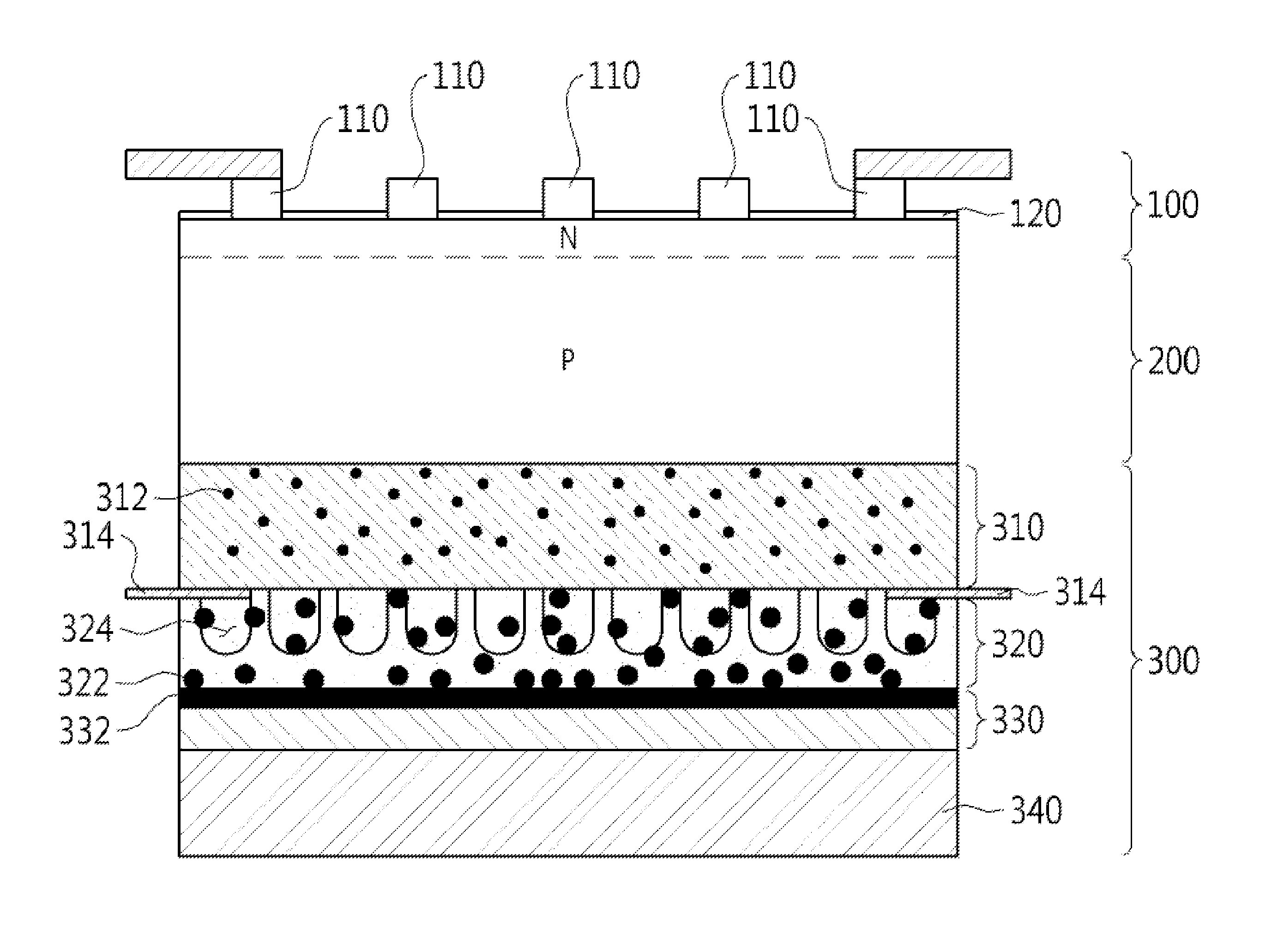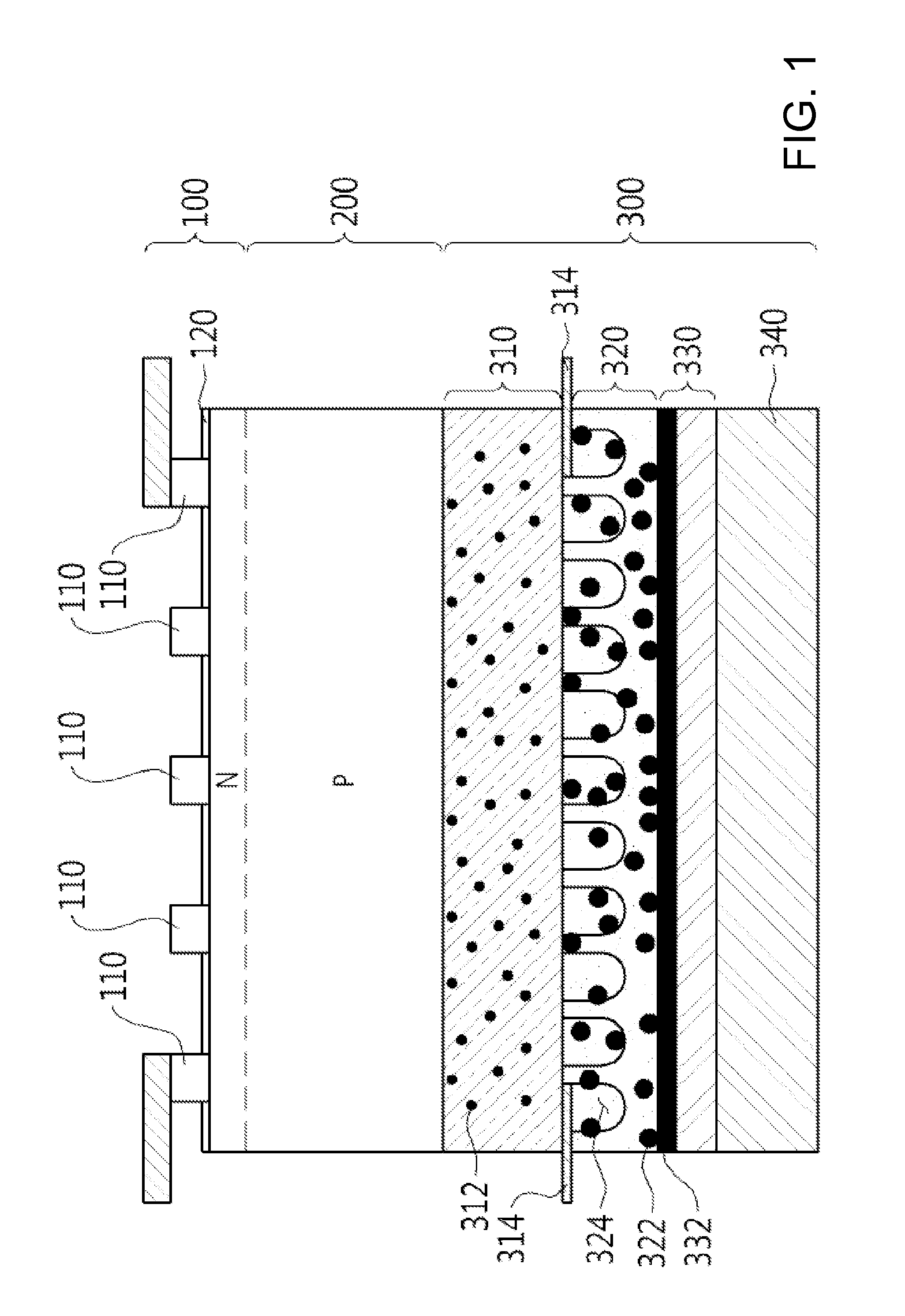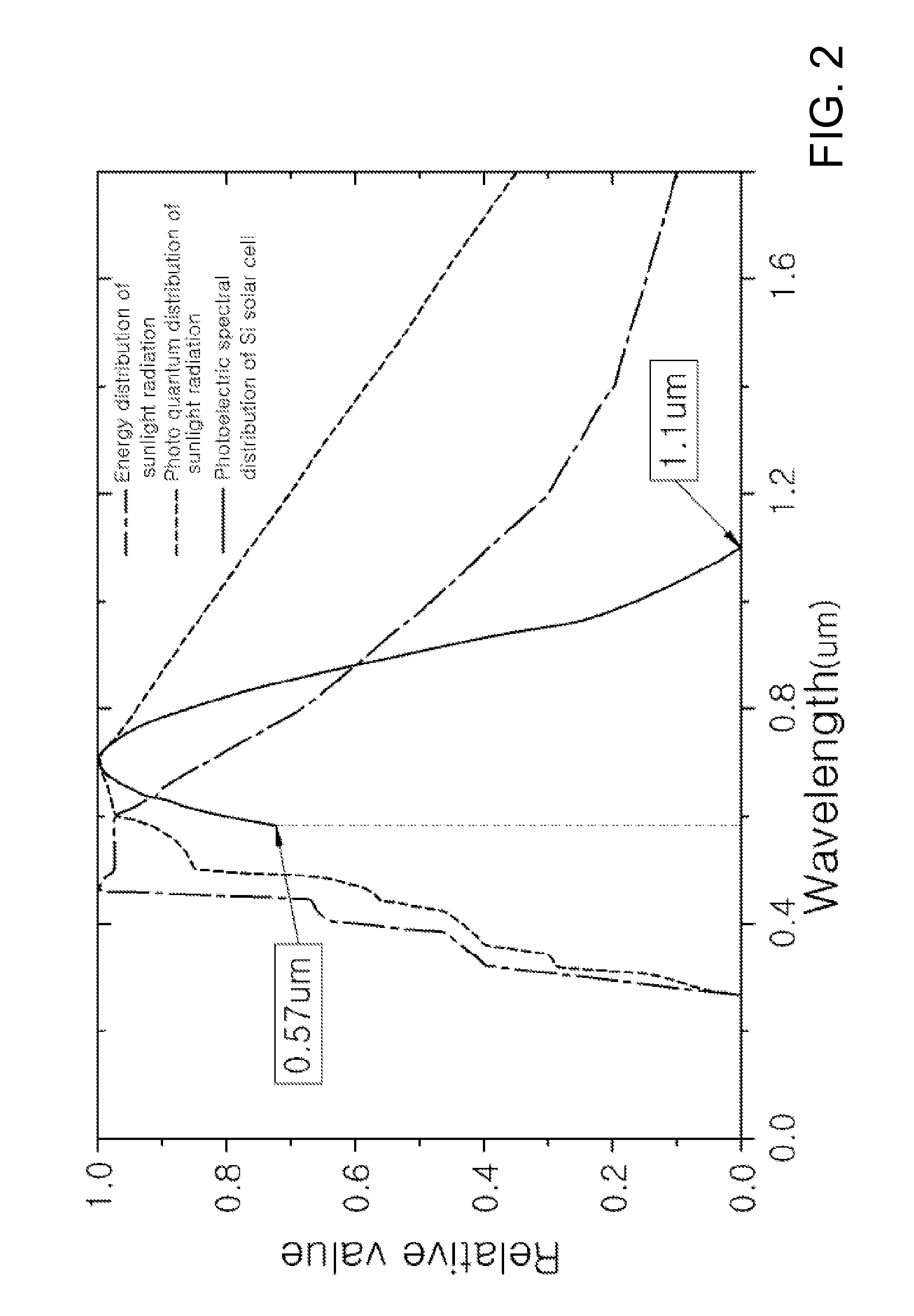High Efficiency Solar Cell Using Phosphors
- Summary
- Abstract
- Description
- Claims
- Application Information
AI Technical Summary
Benefits of technology
Problems solved by technology
Method used
Image
Examples
Example
BEST MODE
[0045]Exemplary embodiments of the present invention will be described in detail with reference to the accompanying drawings.
[0046]FIG. 1 is a diagram of a high efficiency solar cell according to one exemplary embodiment of the present invention.
[0047]According to this exemplary embodiment, the solar cell includes a front section 100, a generator 200, and a rear section 300.
[0048]The front section 100 is a part through which sunlight enter the solar cell. The front section 100 is formed with a front electrode 110, which adjoins the generator 200. Further, the front section 100 is formed with a front anti-reflection film 120 which reduces reflection of sunlight while promoting absorption of sunlight when sunlight is incident on the solar cell.
[0049]The generator 200 generates electricity using a light component of sunlight in a certain wavelength range. In this embodiment, a P-N junction silicon solar cell is used. The silicon solar cell employs a light component in the wave...
PUM
 Login to View More
Login to View More Abstract
Description
Claims
Application Information
 Login to View More
Login to View More - R&D
- Intellectual Property
- Life Sciences
- Materials
- Tech Scout
- Unparalleled Data Quality
- Higher Quality Content
- 60% Fewer Hallucinations
Browse by: Latest US Patents, China's latest patents, Technical Efficacy Thesaurus, Application Domain, Technology Topic, Popular Technical Reports.
© 2025 PatSnap. All rights reserved.Legal|Privacy policy|Modern Slavery Act Transparency Statement|Sitemap|About US| Contact US: help@patsnap.com



